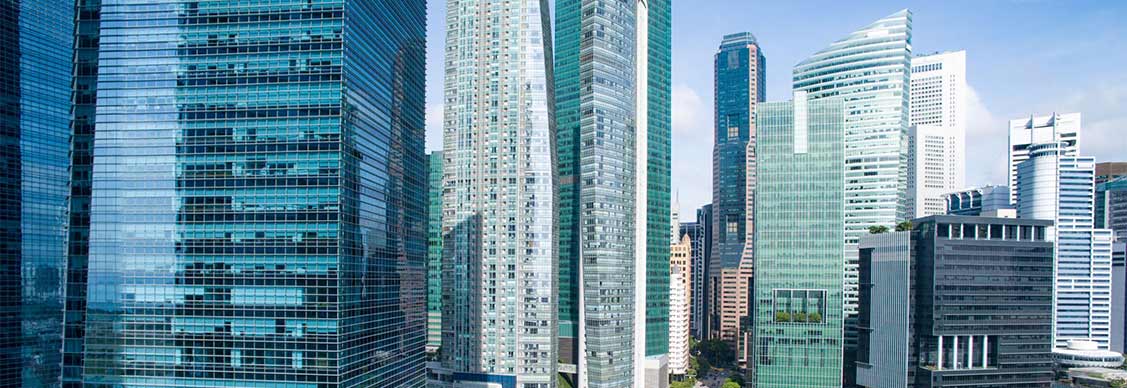How are green building certifications moving with the times?
New criteria are under assessment as building certification schemes adapt to meet an ever-increasing focus on net zero and health and well-being
Green building certifications have been around for decades but as the corporate focus on sustainability grows, newer specialist schemes are making their debut and established ones are moving into new areas.
With many companies now actively seeking to reduce their carbon footprint and make buildings healthier for occupants, certifications from the well-known UK-developed BREEAM, U.S-led LEED or Australia-born Green Star to more niche schemes like AirRated, are in high demand.
“Certification schemes assess projects from design and construction through to the refurbishment and fit out, and then there’s the certification of the assets in operation,” explains Patrick Staunton, Ratings and Certificate Lead at JLL UK.
The 2022 GRESB Real Estate Reference Guide lists around 90 design and/or construction schemes and a further 90-odd operational green building certification schemes.
They’ve come a long from the 1990s when they were more like traditional risk assessments, focusing on issues such as land contamination, pollution and flood risk.
Nowadays, many older certification bodies have adapted in line with the decarbonization challenges facing the real estate industry. The Canada Green Building Council’s Zero Carbon Building Standard was the first to launch a certification addressing both operational and embodied carbon in 2018 with LEED Zero Carbon, NABERS Climate Active Carbon and Design for Performance since following suit.
Others, like NABERS, involve annual assessments to measure the ongoing performance of buildings rather than the initial design. What’s more, newer schemes tend to be more single issue-focused such as on energy use intensity or air quality.
The value of green certifications
For many building owners, green certifications are an external validation of their commitment to the environmental credentials of their assets or the health and wellbeing of their tenants.
And with growing numbers of corporate tenants keen to show the buildings they occupy align not only with their net zero and wider sustainability goals, but also with the high expectations of their employees, certifications can justify a higher price tag.
Meta-analysis by Dalton and Fuerst of 42 studies between 2008 and 2016 showed that green building certifications yielded a rent premium of 6% and a sales premium of 7.6%. Other research found that spaces certified by WELL or Fitwel – both of which focus on health and wellbeing– could attract effective rents that were 4.4% to 7% more per square foot than nearby, non-certified and non-registered peers.
“From a value perspective, there's no doubt that buildings that have a range of market-leading certifications will perform better than buildings that don’t,” says Kirsty Draper, Head of Sustainability at JLL’s UK Agency, although she acknowledges this differential varies between markets.
Depending on location, green certifications can also enable developers and owners to potentially streamline the compliance process, open up tax incentives and funding opportunities, and improve occupancy rates.
A fast-evolving field
The sheer number of green certifications and the different areas they cover, however, is causing issues. Many companies struggle to understand what the different certifications mean, says Draper.
“People in the market may equate a good BREEAM rating or an energy performance certificate [EPC] rating, with a good building performance metric. But BREEAM New Construction or RFO don’t look at operational performance, nor does an EPC, which is why we’re seeing a move towards schemes such as NABERS which do,” she says.
In the era of environmental, social and governance (ESG) targets, there’s also a danger of focusing just on ‘E’ and overlooking ‘S’ or ‘G’.
As such, it can be challenging for developers and occupiers to identify which combination of standards, certifications and rating programmes are most applicable to a particular project.
“When choosing certifications, it’s not about the number, it’s about the relevancy,” says Draper. “Developers and investors need to consider the asset class and the local market and ask whether it will make the building more appealing to an occupier or buyer. They should align certifications to complement each other while avoiding duplication.”
And while getting certified can still deliver financial benefits, the process itself can be extremely costly. Certification procedures are often inflexible, which can be particularly challenging when working across different geographies.
The future of green certification
As performance-focused schemes become more popular, ongoing access to good data is vital. “Buildings equipped with real-time sensor technologies measuring everything from temperature to employee engagement will be better placed to report their true impact on the environment and people,” says Staunton.
Chinese-developed RESET, for example, began by using sensors to monitor indoor air quality, but now uses them to measure factors such as energy, materials and water to demonstrate overall performance.
This focus on ongoing assessment will define future schemes as pressure to improve real estate transparency through accurate reporting grows, predicts Staunton. “If certifications are to continue to signal best-in-class buildings, they need to be able to quantify their green, health and productivity impacts on demand.”
While he believes consolidation among different certification schemes is unlikely, there will be new schemes that look at other areas such as the human side and the governance of sustainability. More niche issues such as accessibility and inclusive design will also come to the fore.
Incoming legislation will equally drive changes and make sustainable real estate more commonplace. “However, there’s always going to be a want for some sort of certification for owners and developers to differentiate their assets,” Staunton concludes.
